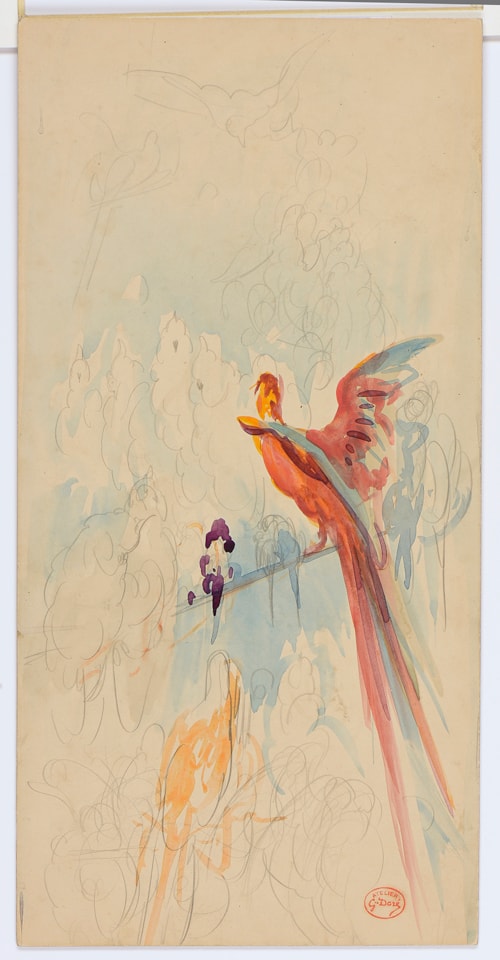
Gustave DORÉ
Strasbourg 1832 - Paris 1883
Biography
Arguably the most widely-known French artist of the 19th century, Gustave Doré was immensely prolific as a draughtsman, printmaker, watercolourist and illustrator. Born in Alsace, he was a precocious artist, and drew from a very early age. He produced his first lithograph at the age of eleven and his first album of lithographs, Les Travaux d’Hercule, appeared four years later. It was also at the age of fifteen that Doré settled in Paris, having gained employment as a cartoonist for the newly-founded Journal pour Rire, while at the same time continuing his studies at the Lycée Charlemagne. He made his debut at the Paris Salon of 1848, where he exhibited two drawings, and two years later showed his first painting. He also began producing albums of his lithographs. By the middle of the 1850s Doré was working extensively as an illustrator, producing highly inventive and original wood engravings to accompany editions of such novels as François Rabelais’s Gargantua and Pantagruel and Honoré de Balzacs Contes drolatiques, as well as his La Légende de juif errant, which appeared in 1856. His fame as an illustrator was well established by 1860, and later projects found him producing illustrations for editions of works by Dante, Cervantes, Perrault, La Fontaine, Chateaubriand, Milton and Tennyson, as well as the Bible. He also continued to produce illustrations for such magazines as the Journal amusant.
Despite his renown as a book illustrator, which brought him considerable wealth, Doré always wanted to be recognized as a painter. Although he was a regular exhibitor at the Salons, his paintings never achieved much critical success, at least in France. (He received an honourable mention for a battle scene in 1857, while in 1865 one of his paintings was purchased by the State.) In England, however, where he began to establish close ties in the 1860s, his work as a painter was much more highly regarded, and among the collectors of his work was Queen Victoria. Several of the artist’s large Biblical paintings were exhibited in London, mainly at the Doré Gallery on New Bond Street, which opened in 1868 and was devoted to his work. (The Doré Gallery continued to show the artist’s work to the paying public in London until 1892, long after his death.) In 1872 he published the illustrated London: A Pilgrimage, in collaboration with the journalist William Blanchard Jerrold, based on some 250 drawings made while exploring the sprawling city between 1869 and 1870. Doré served in the National Guard during the Franco-Prussian War and the Siege of Paris, and produced a number of works with patriotic themes. An accomplished watercolourist, Doré began working extensively in the medium from 1873, following a visit to Scotland, and exhibited several works at the Société d’Aquarellistes Français in 1879, 1880 and 1882. He was also active as a sculptor, most notably with a statue of the writer Alexandre Dumas, completed in 1881, but it is for his accomplishments as a book artist - with an oeuvre of nearly ten thousand illustrations - that he remains best known and most admired today.




